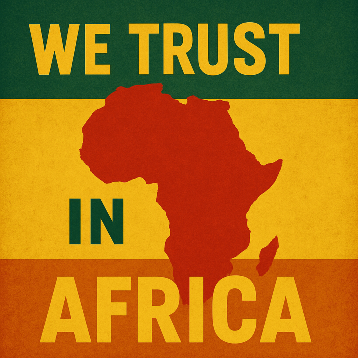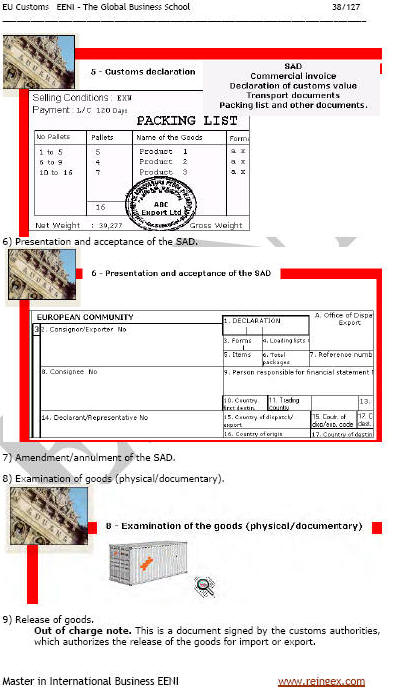International Trade (Online Bachelor of Science)
Techniques of International Trade: Incoterms® 2020, Customs, Documentary Credits (Bachelor of Science in Inter-African Business, e-learning, second semester)
| Bachelor of Science in Inter-African Business |
Subject - “Techniques of International Trade (Incoterms® 2020, Customs, documentary credits)” (6 ECTS) - Online Bachelor of Science in Inter-African Business (second semester).
Syllabus of the Program: Incoterms® 2020
- Introduction to the Incoterms
- What are the Incoterms® 2020?
- Key changes to the Incoterms® 2020
- The Review of the Incoterms® FCA (Free Carrier)
- The change from DAT (Delivered at Terminal) to DPU (Delivered at Place Unloaded)
- Different levels of insurance coverage under CIF and CIP
- Associated costs for each Incoterm (article A9 / B9)
- Analysis of the Incoterms® 2020
- Incoterms® 2020 and international transport
- Incoterms® 2020 for sea and inland waterway transport: FAS (Free Alongside Ship) - FOB (Free On Board) - CFR (Cost and Freight) - CIF (Cost, Insurance & Freight)
- Incoterms® 2020 for any mode of transport: EXW (Ex Works) - FCA (Free Carrier) - CPT (Carriage Paid To) - CIP (Carriage and Insurance Paid to) - DAP (Delivered At Place) - DPU (Delivered at Place Unloaded) - DDP (Delivered Duty Paid)
- How are they used?
- Criteria for selection of the Incoterms® 2020
Objectives of the Program “Incoterms® 2020”:
- To understand the importance of the Incoterms® 2020 in Foreign Trade
- To learn how to calculate the price in function of the Incoterms® 2020
- To know the risk, cost and formalities required in function of the selected Incoterm
Syllabus of the Program: Customs Procedures.
- Introduction to the Customs procedures
- Functions of Customs
- Examination of goods
- Classification of goods
- Customs treatment and clearance
- Summary declaration
- Release for free circulation
- Dispatch for consumption
- Origin of goods
- Customs Legislation. Customs valuation in the EU
- Import Procedures
- Single Administrative Document
- VAT payable on imported goods
- TARIC (Integrated Tariff of the Community)
- Customs agents
- Case Study:
- European Customs Union (EU)
- China Customs
- EU-Turkey Customs Union
- Market Access database (EU)
Objectives of the Program “Customs and International Trade”:
- To understand the role and functioning of Customs in foreign trade transactions, as well as the different trade regimes and methods of classification of products
- To know the import process of a product as well as customs procedures
- To know the Regional Integration Process and his relationship with customs: EU, MERCOSUR, Andean Community, Central American Integration System, ASEAN, Gulf Cooperation Council (GCC), Arab Maghreb Union (AMU), ECOWAS, WAEMU, ECCAS, CEMAC, SADC, EAC, e IGAD..
Syllabus of the Program: World Customs Organization (WCO).
- Introduction to the World Customs Organization (WCO)
- Agreement on Rules of Origin of the WTO
- Harmonized System (HS) of the WCO
- Customs Procedures and Facilitation
- Rules of Origin
- Customs Valuation
- Customs Enforcement and Compliance
- SAFE Package
- Conventions:
- Revised Kyoto Convention
- ATA System (Convention Relating to Temporary Admission)
- Customs Convention on Containers
- Case Study: market access map
The objectives of the Program “World Customs Organization”:
- To know the objectives of the WCO (OMA)
- To understand the Harmonized System
- To understand the Customs Valuation methods and criteria of origin
- To analyze trade facilitation programs and customs procedures
Syllabus of the Program: Documentary credit. Methods of Payment.
- Introduction to the International Payment Methods
- Bank Transfer
- Bank Draft
- Bills of Exchange
- Clean collection
- Documentary Collections
- Letters of Credit (L/C): types, modalities, terminology, and availability
- Opening a letter of credit
- Contents of the letter of credit
- Documents required
- UCP 600
- Electronic L/C (e-UCP)
- Analysis of the Documentary Credits
- Import letters of credit Case Study: M-PESA in East Africa
Objectives of the Program “Documentary credits”:
- To understand the different Methods of Payment used in International Trade and outlining their differences, advantages, and disadvantages both for the importer and the exporter
- To understand what documentary collections are and how they work
- To understand the importance of the documentary credit in Foreign Trade transactions and its functioning
- To know the importance of the Documentary Credits and letter of credit in international trade


Samples: Techniques of International Trade (Incoterms® 2020, Customs, documentary credits) (Bachelor of Science in Inter-African Business, e-learning, second semester).






Language of the subject “Techniques of International Trade (Incoterms® 2020, Customs, documentary credits)” of the Bachelor of Science in Inter-African Business taught by EENI Global Business School (second semester):
 or
or  EENI
EENI  EENI
EENI  EENI.
EENI.
(c) EENI Global Business School (1995-2024)
We do not use cookies
Top of this page

